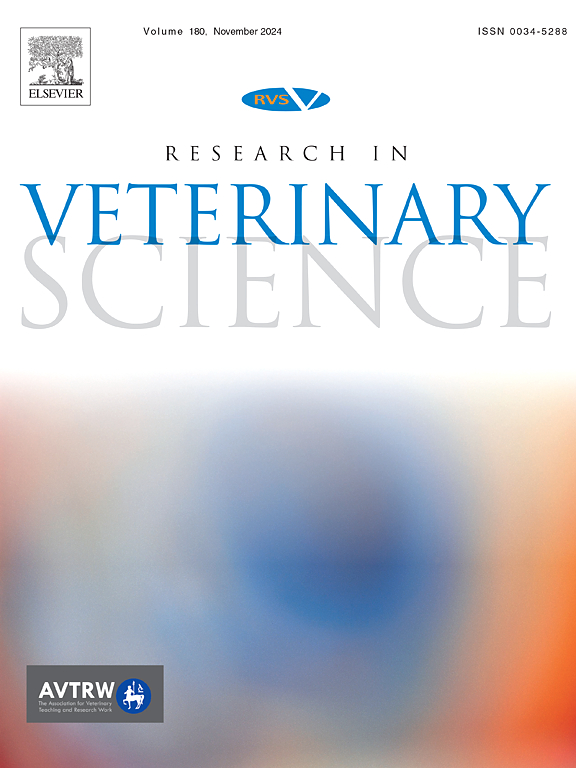Epidemiology and genetic characterization of myxoma virus from the first outbreak in Finland
IF 2.2
3区 农林科学
Q1 VETERINARY SCIENCES
引用次数: 0
Abstract
Myxomatosis, caused by myxoma virus (MYXV), is a fatal disease of the European rabbit (Oryctolagus cuniculus). It has a worldwide distribution and has become an endemic disease throughout Europe since its introduction into the rabbit population in 1950. This study describes the first outbreak caused by MYXV in Finland in summer 2020. Eighteen feral rabbits collected during the outbreak and two during the following year were confirmed positive for MYXV using real-time PCR. Coinfection with rabbit hemorrhagic disease virus (RHDV) was observed in six cases. Whole genome sequencing of MYXV was performed for five rabbit samples collected during the outbreak in 2020 and two rabbit samples collected in 2021 to assess the origin of the virus and possible evolutionary mutations. Genetic characterization revealed that the genomes of the five samples collected during the outbreak in 2020 were identical. Phylogenetic analysis demonstrated the highest nucleotide identity to the German field strain FLI-H (99.97 %). The Finnish strains contain mutations that have not previously been described and may be responsible for changes in virus properties. On the other hand, the virus genome displayed only minor changes during the one-year follow-up in Finland. These findings add to knowledge of the spread of MYXV and its evolution.
求助全文
约1分钟内获得全文
求助全文
来源期刊

Research in veterinary science
农林科学-兽医学
CiteScore
4.40
自引率
4.20%
发文量
312
审稿时长
75 days
期刊介绍:
Research in Veterinary Science is an International multi-disciplinary journal publishing original articles, reviews and short communications of a high scientific and ethical standard in all aspects of veterinary and biomedical research.
The primary aim of the journal is to inform veterinary and biomedical scientists of significant advances in veterinary and related research through prompt publication and dissemination. Secondly, the journal aims to provide a general multi-disciplinary forum for discussion and debate of news and issues concerning veterinary science. Thirdly, to promote the dissemination of knowledge to a broader range of professions, globally.
High quality papers on all species of animals are considered, particularly those considered to be of high scientific importance and originality, and with interdisciplinary interest. The journal encourages papers providing results that have clear implications for understanding disease pathogenesis and for the development of control measures or treatments, as well as those dealing with a comparative biomedical approach, which represents a substantial improvement to animal and human health.
Studies without a robust scientific hypothesis or that are preliminary, or of weak originality, as well as negative results, are not appropriate for the journal. Furthermore, observational approaches, case studies or field reports lacking an advancement in general knowledge do not fall within the scope of the journal.
 求助内容:
求助内容: 应助结果提醒方式:
应助结果提醒方式:


